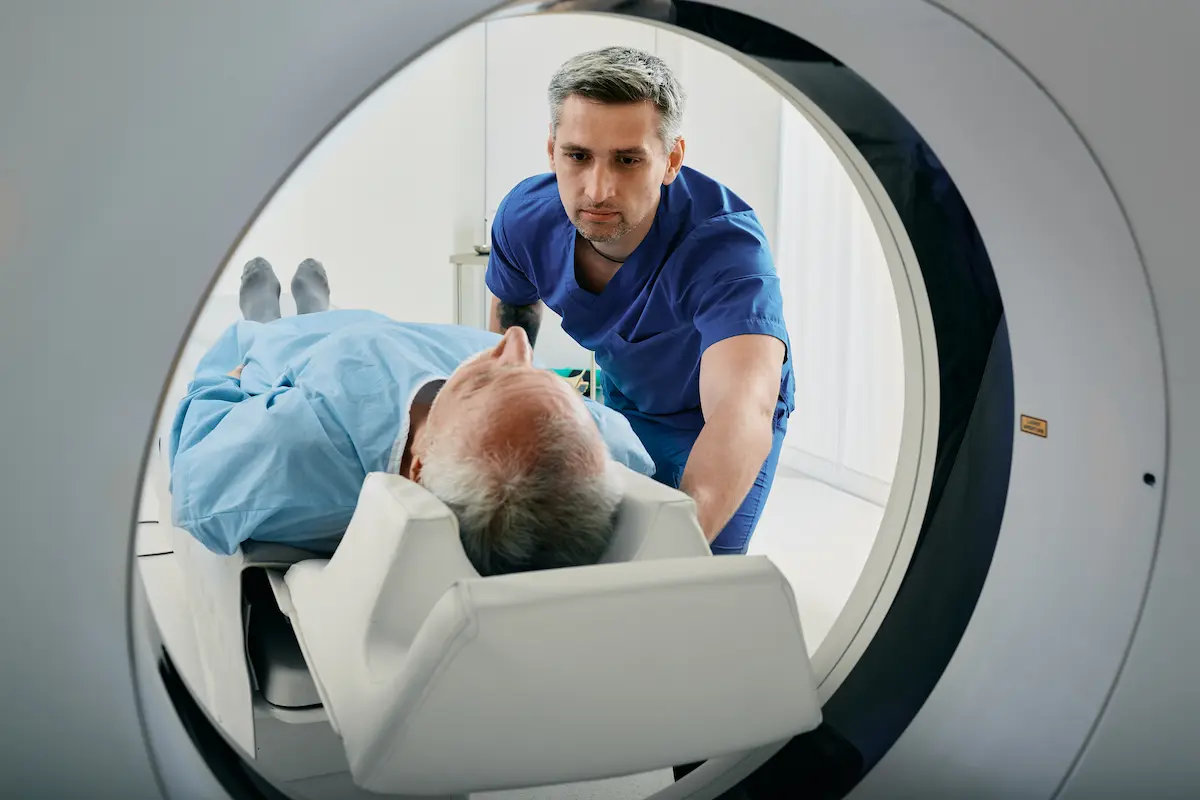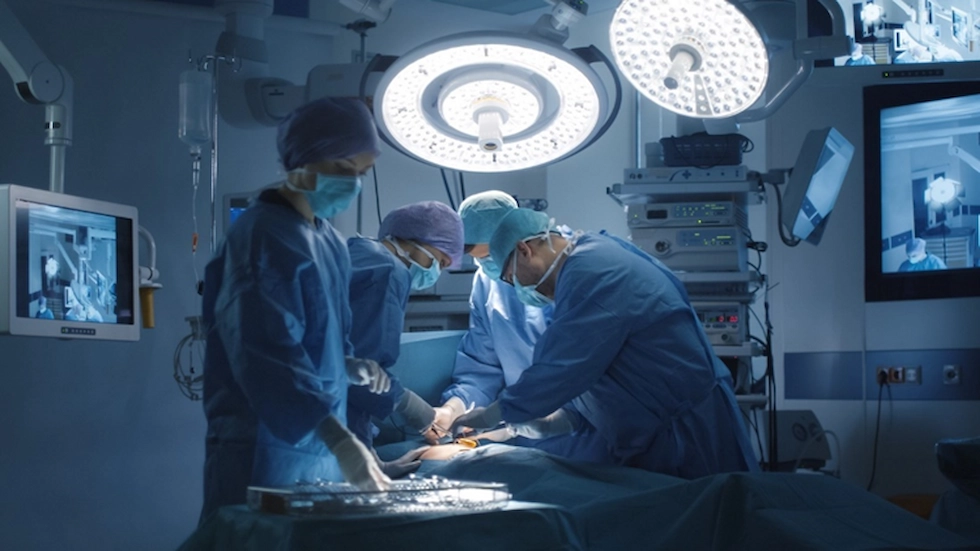Working in allied health means there are many career opportunities within the field, especially in radiology and imaging. From radiation therapists to certified surgical technologists, the allied health field provides a broad range of positions that play a vital role in the healthcare industry.
This blog covers everything from what radiology and imaging is, the personality traits needed for the job, descriptions of each of the disciplines within the field, and much more! To learn more about allied health you can read our blog, What is Allied Health?
What is radiology and imaging?
When most people think of radiology and imaging they think of x-rays, however, there are many other disciplines that deal with different types of imaging exams, such as magnetic resonance imaging (MRI), computed tomography scan (CT scan), ultrasound, and positron emission tomography scan (PET scan) (Health Images, n.d.). According to the U.S. National Library of Medicine, “Radiology is a branch of medicine that uses imaging technology to diagnose and treat disease,” (Medline Plus, n.d.).
Education requirements
When pursuing a career in radiology and imaging, there are a few options regarding education. The two most common programs are an Associate of Applied Science (A.A.S.) degree and a Bachelor of Science (B.S.) degree. If you are interested in specializing in a certain field within radiology, such as an MRI or vascular tech, then further education will be required. Depending on the specialization, this would likely consist of certification requirements, continued education, and advanced training. Healthcare professionals looking to further advance their careers may consider getting a master’s degree in radiology and some might even pursue their doctoral degree.
Skills needed
Common soft skills that are needed in this field include attention to detail, effective communication, attentive listening, and computer knowledge. Skills that are necessary, but more specifically tailored to the field include radiation safety, ability to develop radiographic images from exams, and basic life support.
Personality traits
Before considering a career in radiology and imaging, it may be helpful to see if your personality aligns with those that are already practicing in the field. Healthcare professionals working in radiology and imaging have been characterized as patient, compassionate, communicative, analytical, and attentive (All Allied Health Schools, n.d.). While these personality traits are not required for an allied healthcare professional in radiology and imaging, the traits are beneficial.
Work settings
Healthcare professionals in radiology have several different options for work settings. For instance, many of these healthcare professionals work in physicians’ offices, outpatient care centers, diagnostic labs, research centers, imaging facilities, and the radiology department of hospitals (BestColleges Staff Writer, 2023).
Disciplines within radiology and imaging
Because of the many disciplines within the radiology field, healthcare professionals have the option to choose from a variety of different areas to practice in. There are even several opportunities for career growth in certain disciplines. Read below to learn more about the large variety of jobs in radiology and imaging.
Radiology technologist and x-ray technologist
Also referred to as radiographers, radiology and x-ray techs often perform similar tasks. These healthcare professionals use x-rays to examine certain parts of a patient's body. Radiology technologists play a vital role in the examination process and preparing patients, placing their bodies in correct positions, and operating the equipment used to take the x-ray (Mayo Clinic College of Medicine and Science, n.d.). Once you start your career as a radiology or x-ray technician, you can advance to specialties such as an MRI or CT technologist.
Magnetic resonance imaging technologist
An MRI technologist’s main role is to take pictures of the inside of a person's body by operating magnetic resonance imaging (MRI) technology (Coursera, 2023). By doing this, MRI technologists can detect if the patient has health problems such as tumors, spinal injuries, joint disease, and more (Better Health Channel, 2007).
Computed tomography technologist
A computed tomography (CT) technologist is also a specialty within the radiology field. An article titled, “CT Technologist – Career, Salary, and Education Guide” states, “Computed tomography (CT), also known as computed axial tomography (CAT), is a non-invasive diagnostic procedure that uses X-rays (ionizing radiation) to capture images of internal portions of the body. A CT scan differs from more basic X-rays in that it takes cross-sectional images of organs, bones and other internal structures,” (Ultrasound Schools Info, n.d.).
Ultrasound technologist
An ultrasound technician, also known as a sonographer, is another discipline where you can advance into specialties within radiology. These specialties include a vascular technologist and an echo technologist. An ultrasound technician is responsible for examining certain parts of a patient's body using special equipment, which allows physicians to accurately diagnose diseases and other health related occurrences. Sonographers typically examine a patient's heart, abdomen, reproductive system, and blood vessels (Cambridge College of Healthcare and Technology, n.d.).
Vascular technologist
Vascular technologists specialize in ultrasound technology and use sonograms to exam a patient's vascular health. Common tasks include preparing patients for their diagnostic examinations where they conduct noninvasive ultrasound tests. Vascular technologists will also review the ultrasound images that were retrieved from the examination (Betterteam, n.d.).
Echocardiogram technician
An echo technician is an ultrasound technician that has specialized in using echocardiogram technology to take images of a patient's heart. This enables a physician to diagnose and treat diseases related to the cardiovascular system in a patient. By using non-invasive imaging technology, an echo tech is able to examine a patient's heart, arteries, veins, valves, and more (Learn.org, n.d.).
Cardiovascular radiology technologist
Somewhat different from a radiology technologist, cardiovascular radiology technologists mainly focus on examining the heart. According to an article by SHRM, it states, “The Cardiovascular Technologist will conduct tests on pulmonary or cardiovascular systems of patients for diagnostic purposes. The Cardiovascular Technologist may also conduct or assist in electrocardiograms, cardiac catheterizations, pulmonary functions, lung capacity, and similar tests,” (SHRM, n.d.).
Catheterization lab technologist
Similar to cardiovascular radiology technologists, catheterization lab technicians also focus on the heart. Catheterization lab techs will typically help run tests on the heart, insert catheters into the heart, administer fluids, conduct x-rays, and more (Learn.org, n.d.).
EEG technologist
Short for an electroencephalographic technologist, these healthcare professionals scan and record a patient's brain activity with an EEG device to see the current state of their nervous system (ZipRecruiter Marketplace Research Team, n.d.). An EEG tech works closely alongside neurologists and often assists them throughout their workdays.
EKG technologist
An electrocardiogram, or EKG, is a machine that is used to monitor the health of the heart. EKG technicians conduct tests on the heart and then analyze the patient's cardiovascular system as a whole (Training Direct, 2022).
Electrophysiology lab technician
According to an article titled, “Electrophysiology Technician Overview” the author states, “The job of an EP Technician includes placing a cardiac electrophysiology catheter in a patient, reading electrocardiograms, and interpreting the data to help diagnose heart problems. They are responsible for maintaining the equipment in the lab and answering patients' questions about the procedure,” (Zippia, n.d.). While many of these disciplines have to do with heart health, they all play a vastly different role in the overall care of their patients.
Interventional radiology technologist
IR techs are medical professionals that work alongside physicians to perform minimally invasive procedures by utilizing fluoroscopy and other imaging tools. Fluoroscopy is beneficial in radiology because it provides x-ray images in actual time. Common procedures include angioplasties, biopsies, catheter insertions, stent placements, and more (Slyter, 2022). This field of radiology is different from others due to its wide range of examinations and procedures
Mammographer
A mammographer's duties include operating the necessary equipment for breast screenings. Mammographers help physicians detect if a patient has breast cancer or other diseases in the breast tissue (ARRT, n.d.).
Nuclear medicine technologist
By administering radioactive drugs to patients, nuclear medicine technologists are then able to capture images of radioactive material in the patient's body with the use of high-level imaging equipment (Mayo Clinic College of Medicine and Science, n.d.). Doing this allows physicians to accurately diagnose and treat patient’s medical conditions.
Radiation therapist
You’ve probably heard of cancer patients undergoing radiation therapy to combat their illness. Radiation therapists are the healthcare professionals who administer the correct doses of radiation to help patients fight their critical illnesses (U.S. Bureau of Labor and Statistics, n.d.).
Healthcare professionals in the radiology and imaging field save millions of lives every year by being able to detect and diagnose critical illnesses in their patients. By detecting these illnesses early, many patients can combat their medical conditions and live normal lives. If you think you could see yourself working in the field of radiology and imaging, don’t hesitate to do more research on what education program could be right for you. We hope you were able to learn more about the field of radiology and imaging and all it has to offer. Click here to view and apply for allied health jobs in radiology and imaging with Favorite!
https://www.healthimages.com/what-is-radiology/
https://www.allalliedhealthschools.com/radiology-technician/
https://www.coursera.org/articles/mri-technologist
https://www.betterhealth.vic.gov.au/health/conditionsandtreatments/mri-scan
https://www.cambridgehealth.edu/ultrasound-technician/
https://www.betterteam.com/vascular-technologist-job-description
https://learn.org/articles/What_Does_an_Echo_Tech_Do.html
https://learn.org/articles/Cath_Lab_Technician_Career_and_Salary_FAQs.html
https://www.trainingdirectusa.com/blog/what-is-an-ekg-technician/




